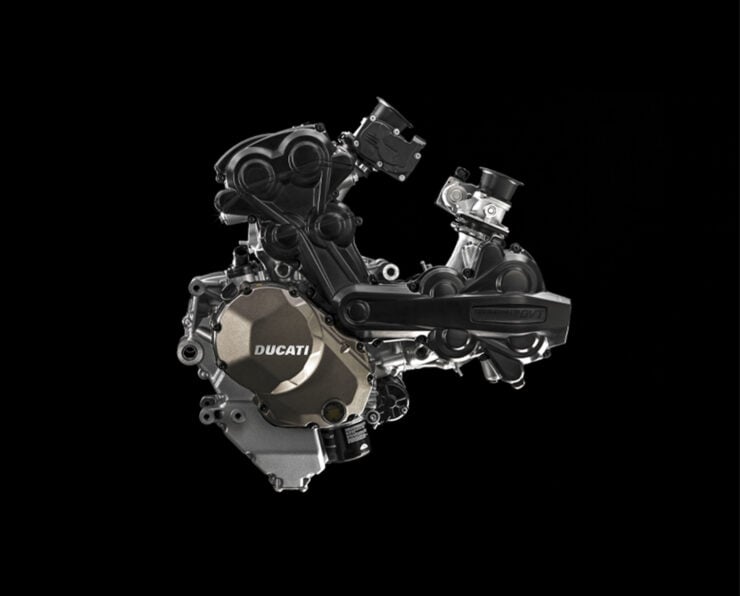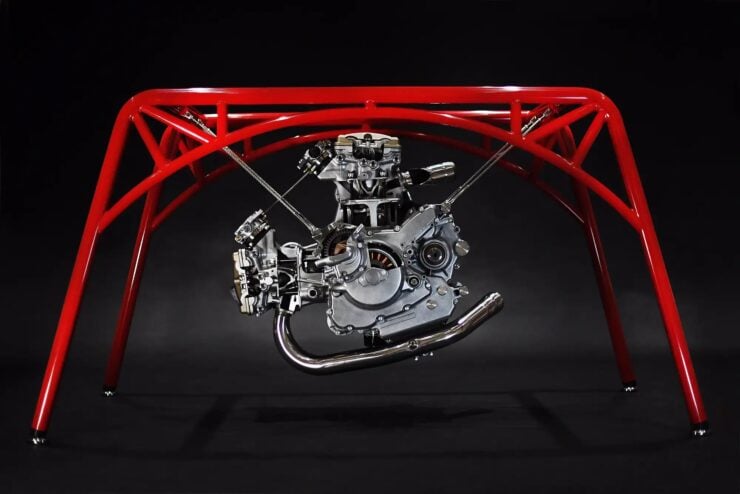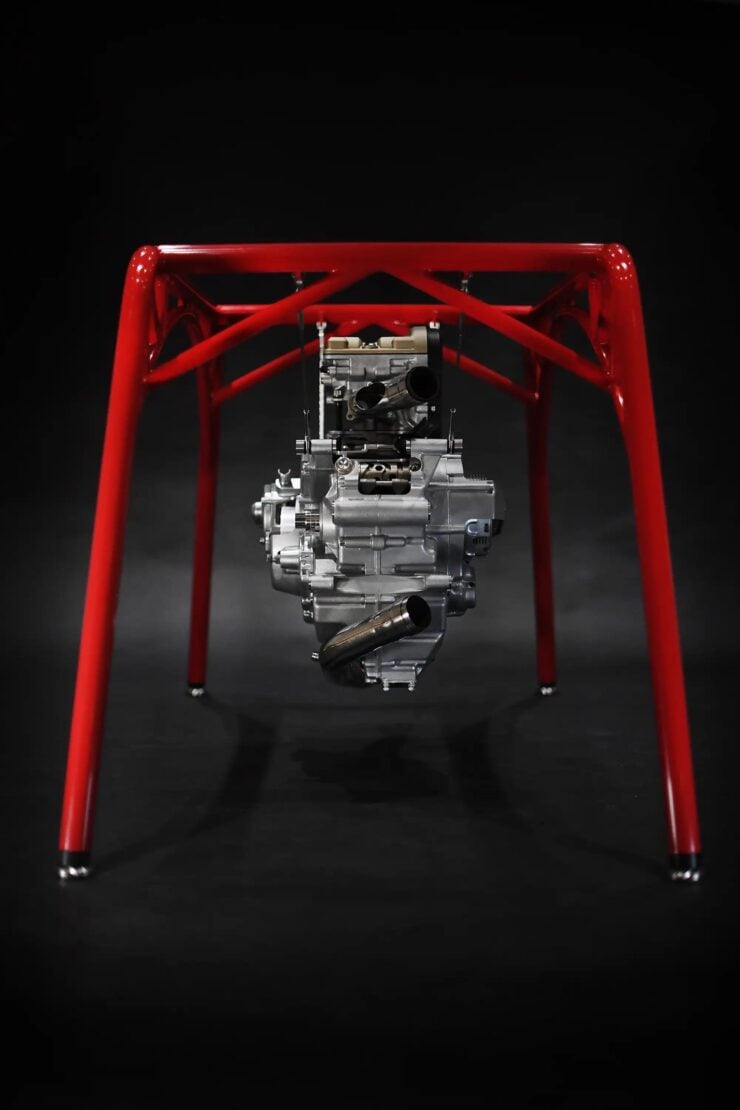This is a table built around a Ducati Testastretta L-twin engine, L-twin being Ducati’s preferred nomenclature as opposed to V-twin, which is more often associated with American bikes.
The Testastretta was developed on the earlier Desmoquattro Ducati engines, but incorporated a series of major upgrades, including some from the world of Formula 1, which increased engine power significantly and helped keep the Italian marque at the pointy end of the global superbike arms race.


History Speedrun: The Ducati Testastretta Engine
The Ducati Testastretta twin was introduced in 2001 with the release of the Ducati 996R – it marked a major turning point in Ducati’s L-twin engine evolution. The Testastretta name is Italian for “narrow head,” referring to the 25º valve angle, a significant departure from the 40º angle used in the earlier Desmoquattro engines. This change allowed for a more compact combustion chamber, larger valves, increased compression ratios, and improved combustion efficiency.
The 996R’s 998cc Testastretta delivered 135 bhp at 10,200 rpm. Bore and stroke were increased to 100 mm by 63.5 mm, and in order to improve the breathing, it had larger valves and a ported higher-flow cylinder head.
These updates resulted in a broader powerband and better top-end performance, particularly important for homologation in World Superbike (WSB) competition. The Testastretta would soon replace the aging Desmoquattro across Ducati’s high-performance road-going models.
The next major step came with the 999 series, which used a further refined version of the Testastretta in both 999 and 999R models. The 999R, with its 104 mm bore and 58.8 mm stroke, produced up to 150 bhp and included titanium valves, magnesium covers, and upgraded internals.
With the launch of the 1098 in 2007, Ducati increased displacement again – bore was pushed to 104 mm, stroke to 64.7 mm, bringing the total to 1099cc. The 1098R, using a 106 mm bore and 67.9 mm stroke (1198cc), made a claimed 180 bhp in stock trim.
In 2010, Ducati debuted the Testastretta 11°, designed for road-focused models like the Multistrada 1200. While the basic architecture remained similar, valve overlap was reduced to 11º from the 41º used in the superbike version. This lowered peak output slightly but improved low and mid-range torque, fuel efficiency, and overall rideability. The 11° valve overlap engine became a mainstay in bikes like the Diavel, Monster 1200, and Hypermotard 950.
The Testastretta DVT (Desmodromic Variable Timing) appeared in 2015 – it used cam phasers on both intake and exhaust cams and the DVT system allowed continuous adjustment of valve timing through the rev-range. This resulted in better low-end torque without sacrificing high-end power, along with reduced emissions and improved fuel consumption (though only slightly).
Later versions, like the 1262cc Testastretta DVT used in the Diavel 1260 and Multistrada 1260, had a 106 mm bore and longer 71.5 mm stroke. These engines kept the variable timing and produced up to 162 bhp with a flatter torque curve aimed at improving real-world riding.
Ducati has since transitioned its top-tier superbikes to the Desmosedici Stradale V4 platform, however the Testastretta remains in production. It powers a wide range of the Italian motorcycle marque’s models thanks in large part to its proven durability, tunability, and its famously broad performance envelope.
The Ducati Testastretta Table Shown Here
The Ducati Testastretta table you see here has a tubular steel trellis frame painted red, with custom-made braided stainless steel supports and fittings, and a glass top suitable to seat six.



Slung under the glass tabletop is a Ducati Testastretta engine which has been sectioned and polished, allowing a detailed view into the engine’s various moving parts. These parts all move as they do when the engine is running thanks to an integrated DC motor hidden within the starter motor casing that slowly spins the full rotating assembly.
The table is now due to roll across the block with Iconic Auctioneers in late-August with a price guide of £10,000 – £15,000 or approximately $12,900 – $19,350 USD. If you’d like to read more or register to bid you can visit the listing here.
Images courtesy of Iconic Auctioneers




